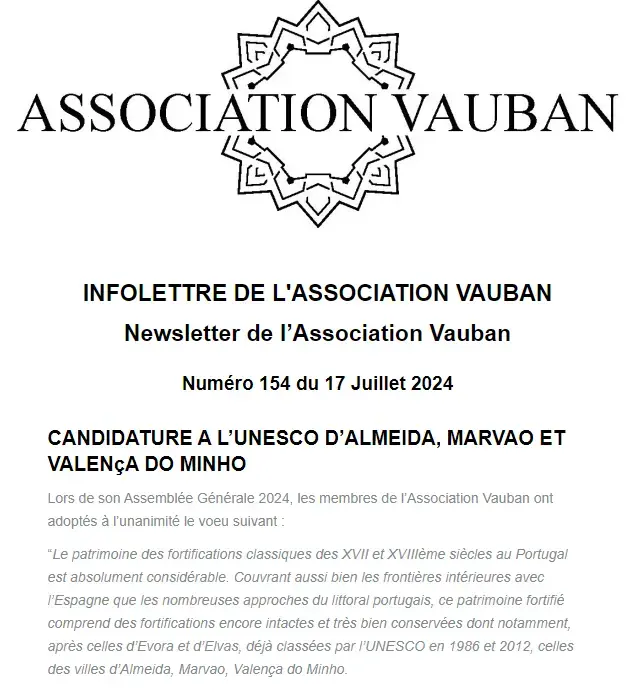UNESCO application for the Raia Fortresses: Almeida, Marvão and Valença do Minho in the spotlight
- bcs543
- Jul 9, 2025
- 2 min read

The historic fortresses of Almeida, Marvão and Valença do Minho took an important step towards being recognised as UNESCO World Heritage Sites. On 12 June 2024, the Vauban Association, one of Europe's most prestigious bodies in the study and preservation of bastioned fortifications, unanimously approved a motion to support the joint candidacy of these three fortresses in the Portuguese Raia. This decision was taken in Metz, France, during the ‘Vauban in Lorraine’ congress, reinforcing the international relevance of the candidature.
These three Portuguese fortresses represent an outstanding example of 17th and 18th century military architecture, inspired by the Vauban model, a defensive system designed to protect borders through a coordinated network of fortresses. The link to the Vauban model is direct: Almeida, Marvão and Valença relied on French military engineers in their design, such as Manesson-Mallet and Champalimeau de Lussane, who applied the principles of modern military engineering of the time to Portuguese territory. These structures were designed not just as isolated elements, but as part of a coherent defence system, comparable to the French pré carré, forming a continuous barrier along the border with Spain.
The Vauban Association's motion highlighted three main factors that justify the uniqueness of the candidacy: the integrity and coherence of the fortified complex of Almeida, the ingenious adaptation of the medieval fortification of Marvão to modern principles of military architecture, and the double and strategic layout of Valença do Minho, which creates a powerful defensive front facing the River Minho. These three examples show how Portugal has been able to adapt and apply the most advanced models of European defence engineering with excellence.
The Vauban Association's support is based on vast documentation gathered over decades, especially the work of the Almeida Centre for Military Architecture Studies (CEAMA), led by Professor João do Campos. This solid scientific and historical basis is one of the candidature's strongest assets. With this motion approved, the Association also undertakes to publicise its support to other networks of Vauban cities and fortifications in Europe, including Luxembourg, the Netherlands, Germany and Italy, strengthening the international dimension of the Portuguese candidacy.
The inclusion of Almeida, Marvão and Valença do Minho on UNESCO's World Heritage List will have a profound impact on the valorisation of Portugal's military-historical heritage, promoting the preservation of structures, attracting visitors and strengthening the cultural identity of the border regions. Furthermore, the candidacy is part of a broader strategy of sustainable tourism, historical research and cultural dynamisation.
Portugal is thus one step closer to having the exceptional value of its fortresses recognised, in an effort that unites history, architecture, identity and international cooperation. The UNESCO nomination of these three jewels of Portuguese military architecture is not only a step towards global recognition, but also an invitation to rediscover the heritage that has shaped the history and defence of Portugal.



Comments